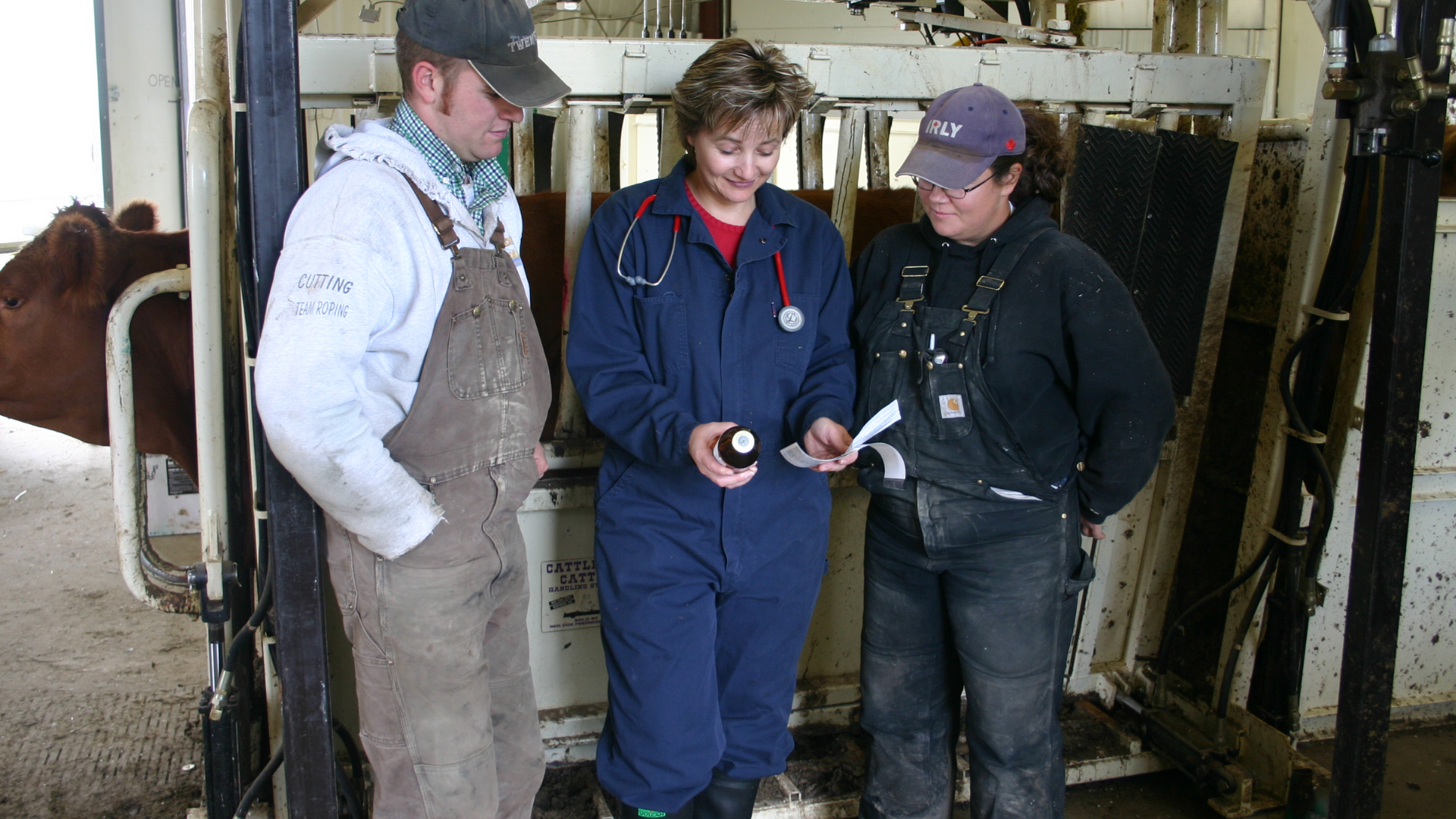In beef feedlots, young growing cattle are fed a high-energy diet to produce marketable beef at a low cost of gain. Depending on the starting body weight and age of the cattle, the period of feeding varies from 60 days to 12 months. The success of a modern feedlot depends on excellent management, a favourable economic climate, and relative freedom from unfortunate events such as disease epidemics or unexpected increases in costs (eg, feed) or decreases in the price received for the final product. The concept of disease should include all of the identifiable factors that cause suboptimal performance: inadequacies in feeds and feeding systems, the purchase of undesirable types of cattle, and clinical and subclinical disease.

The feedlot veterinarian is responsible for maintaining optimal animal health through the following activities:
- Making regularly scheduled visits to the feedlot. The frequency of visits depends on the size of the feedlot, the time of year, the expertise of the feedlot personnel, whether animals have recently arrived, and the degree to which the veterinarian is contractually responsible for the total animal health program.
- Being available for emergency visits to the feedlot when disease epidemics are seen.
- Performing necropsies during visits and training feedlot personnel to do necropsies at other times.
- Examining sick animals to ensure that reasonably accurate diagnoses are being made and rational therapy is being given according to established treatment protocol.
- Regularly examining, analysing, and interpreting animal health and production data and making recommendations in a written report. The effectiveness of detection of sick animals, based on response and relapse rates and case fatality rates, should be determined, and the effectiveness of the processing program for new arrivals, which includes the vaccines used and the medications given, should be examined and analysed regularly.
- Selecting and prescribing all drugs used in the feedlot, giving specific advice about the use of drugs, and establishing a drug residue-avoidance program.
- Discussing overall animal health and production performance with the feedlot manager and other consultants, setting animal health and production goals, and monitoring achievement.
- Comparing the feedlot with other operations. The veterinarian should produce a monthly report that compares processing costs, treatment costs, and death loss by arrival weight and days on feed.
When the consulting veterinarian is not readily available, a local practitioner can serve as a valuable resource for the feedlot. Serving as part of the feedlot’s health care team, the local veterinarian can make significant contributions to the animal health program.
The greatest risk for initial introduction of many infectious diseases into a herd is the addition of sub-clinically infected animals, although some risk is also attributable to wildlife carriers. Potential sources of infection may be seen with herd additions, or through intentional or inadvertent movements and contacts. Herds may be classified as “closed” or “open,” based on their potential for pathogen exposure. Closed herds restrict the introduction of animals and vehicles from livestock sources as well as contact with other herds and animals. Open herds have a higher risk of introducing pathogens through such practices as introduction of purchased replacements (especially from commingled sale groups), purchase of bulls, direct introduction of high-risk stocker calves (especially into high population densities), and mingling of animals of different backgrounds, through either cooperative breeding programs or poor herd biosecurity.
In general, all purchased or introduced animals should be separated from the home herd for a reasonable observation period (e.g. 4 weeks); these animals should undergo the same health procedures as the home herd. It is prudent to obtain animals from herds in which the herd health history is known and to have a record of vaccinations and treatments. Before purchasing animals, buyers should be sure that herds have tested negative for paratuberculosis and are free of persistently infected BVD, tuberculosis, and brucellosis. If the herd is free of diseases such as bovine leukosis and anaplasmosis, purchasing only animals from other herds negative for these diseases is vitally important. Pubertal bulls should be tested for trichomoniasis and vibriosis when indicated. For artificial insemination (AI) programs, semen should be used only if it was processed by an approved AI centre with a comprehensive health program for minimizing the risk of transmission of venereal (and other) diseases through frozen semen.